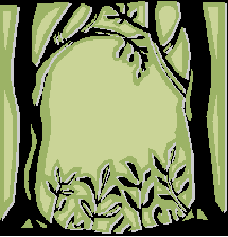




1. |
The rooting ability of branch
cuttings was evaluated for 100 tree species (including 41 families and
78 genera) collected in a tropical rainforest in Sarawak, Malaysia. Leafy
cuttings of natural forest saplings were planted in a non-mist propagation
system with IBA treatment. During the 6-month experiment, 66 species were
rooted with an overall mean rooting percentage of 37.7% (range 0¯100%).
Species in the families Dipterocarpaceae and Lauraceae had a low rooting
ability, whereas those in Euphorbiaceae, Rubiaceae, and Annonaceae had a
high rooting ability. Differences in rooting ability were related to species-specific
mature sizes, diameter growth rates and habitat preferences. Species of
smaller mature sizes and faster diameter growth rates showed better rooting
ability. Species whose forest saplings sprouted more vigorously after experimental
felling rooted better than those that showed less vigorous sprouting. Species
whose habitats were on lower elevations, concave slopes, and/or clay-rich
soils rooted significantly better than those that preferred opposite habitats
or habitat generalists that showed no significant habitat preference. The
implications of these relations are discussed from the viewpoint of saplings'
adaptation to physical damage in their natural habitats.
|
Indigenous species are replacing exotic fast-growing species in the rehabilitation of degraded tropical rainforests. To properly restore degraded ecosystems, particularly in the moist tropics, a remarkable number of species are required. For example, a tropical rainforest in Sarawak, east Malaysia, contained over 1000 tree species within an area of approximately 50 ha (Condit et al., 2000). Thus, it is important to maintain a regular planting stock of various indigenous tree species to restore the diversity of tropical rainforests. However, the irregular flowering and fruiting habits (i.e., "general flowering"; Appanah and Ashton) and the recalcitrant nature of the seeds of many species (Tompsett, 1987) make seed collection problematic in Southeast Asian rainforests. Collection of wildings has been used to supplement seedling stock, but mortality is high without proper handling (e.g., Palmiotto, 1993).
To overcome the unpredictable supply of seeds, many studies have been conducted
investigating the ability of cuttings to propagate vegetatively, and successful
rooting has recently been reported for a considerable number of Southeast
Asian rainforest species (reviewed by Dick and Aminah, 1994). However, most
of the species chosen are economically important timber trees, including
members of the Dipterocarpaceae, which dominate the forests. Little information
is available regarding the vegetative propagation of cuttings from species
that are economically less important. In order to successfully rehabilitate
the diversity of degraded forests, we need more information on the rooting
ability of non-timber tree species, especially since the majority of species
in tropical rainforests are non-timber species.
The study selected 100 study species (41 families and 78 genera) from the
LTER plot. Voucher specimens of the species are kept at the Forest Research
Center of the Forest Department of Sarawak, Kuching. Branches were collected
from saplings of the study species (n=2-10 per species; height 2-6 m) under
the closed canopy of the forest around the LTER plot and transferred to the
nursery (0.5-1 km away from the collecting sites) in sealed .plastic bags
containing 0.2 l water. Branches were collected in June-July 1997, December
1997, and January 1998. Ten leafy cuttings of 2-4 nodes (length~15cm) were
prepared for each species. Two to four leaves (depending on leaf size) were
left attached to each cutting, and all other leaves were removed. Large leaves
were trimmed to approximately 30 cm2 each. We adopted a non-misting cutting
propagation method: cutting beds were constructed of cylindrical plastic containers
(50 cm in diameter and 25 cm deep) containing water-saturated fine river
sand and sealed with transparent plastic. The cutting beds were kept under
50% natural shade for 6 months. Cuttings of the same species were planted
in the same cutting bed, thus, there was no replication for each species.
Commercial rooting powder (Serbajadi Rooting Powder, Perniagaan Serbajadi,
Malaysia; active ingredient IBA) was applied to the base of each cutting.
Preparation and planting of cuttings were completed within 8 h from the time
of branch collection. The cutting beds were watered 1-3 times during the
experiment when the sand appeared to be dry. All cuttings were harvested after
6 months. The number and length of all roots thicker than 1 mm at the base
were measured on each cutting.
Of 100 study species, 66 successfully rooted during the experiment from
at least one cutting. Rooting percentage of rooting species differed from
10 to 100%. Among the six families including >3 study species, Dipterocarpaceae
and Lauraceae had smaller proportions of rooting species: 5/16 and 1/4, respectively.
In contrast, the majority of the study species successfully rooted in Euphorbiaceae
(16/17), Rubiaceae (5/5) and Annonaceae (5/7) (see Appendix A).
|
Home
|
Index
|
Preservation
|
|
Goals
|
Characterization |
Time plan |
|
FAQ's |
Monitoring |
Members |
|
Presentation |
Minutes |
Final Presentation
|